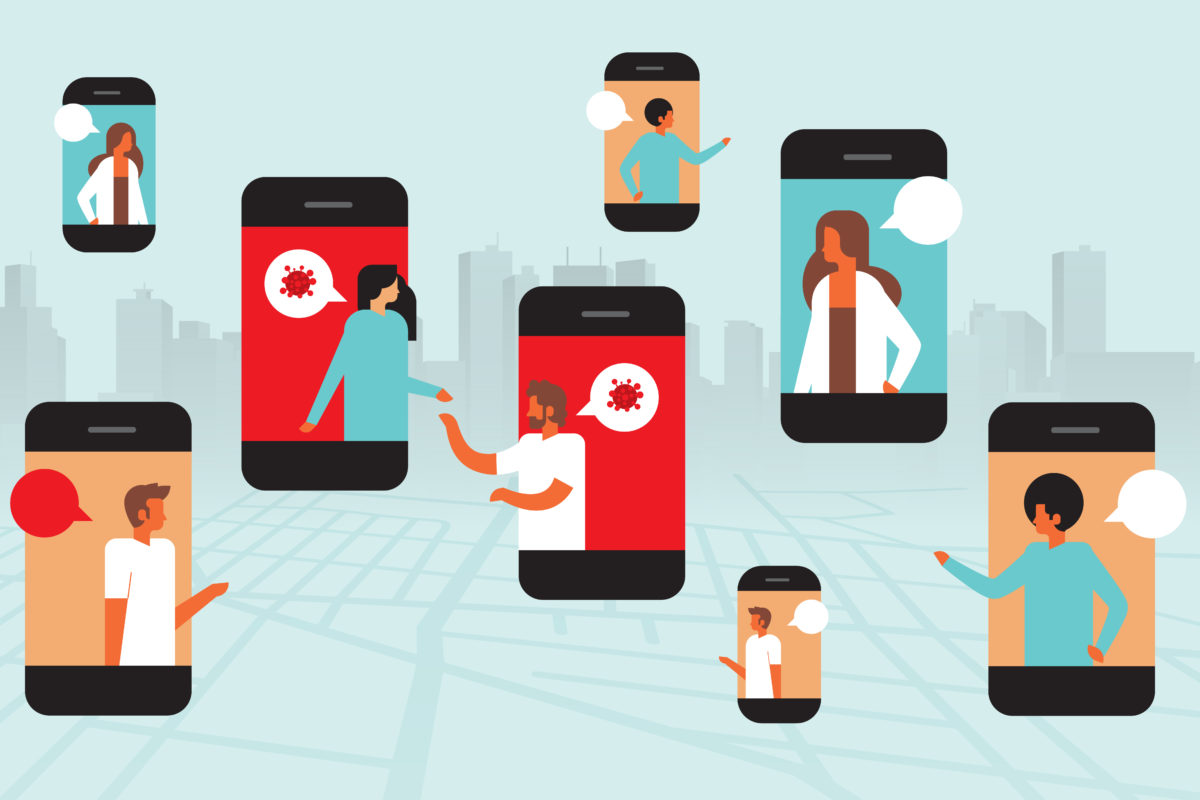By Hayley Evans
The international response to COVID-19 has paid insufficient attention to realities in the Global South, making the response Eurocentric in several ways.
This series of blog posts looks at three aspects of the COVID-19 response that underscore this Eurocentrism. The first post in this series will scrutinize the digital aspect of the international response to COVID-19. In creating and promoting technological solutions that are impractical and ineffective in the Global South, this digital focus has afforded asymmetric protection to those located in the Global North.
This series draws on primary research conducted remotely with diverse actors on the ground in Colombia, Nigeria, and the United Kingdom, as well as secondary research gathered through periodicals, webinars, an online course in contact tracing, and membership in the Ecological Rights Working Group of the Global Pandemic Network. I have written about previous findings from this work here.
Technification and Data Colonialism
A first example of the Eurocentric international approach to the coronavirus pandemic is the technification of responses, primarily exhibited in the form of digital contact tracing apps.
Epidemiologists understood that the pandemic would be controllable through highly effective contact tracing and case isolation. Many thought technological solutions were the modern “magic bullet” solution. Statistical geneticists, epidemiologists, and other experts suggested that a digital contact tracing intervention might control the virus more efficiently, and at scale, than traditional contact tracing measures.
Citing examples of effective, technological virus containment strategies in places like China, South Korea, and Singapore, researchers, experts and politicians alike extolled the life-saving virtues of location data and instantaneous exposure notification. International health organizations also were quick to embrace the technological response. For example, the UN Department of Economic and Social Affairs highlighted the use of digital platforms in contact tracing in its policy brief, “COVID-19: Embracing digital government during the pandemic and beyond.”
The global push toward the use of digital contact tracing apps at the pandemic’s beginning did not affect communities equally. In fact, the response was impractical primarily for those in the Global South, where rates of internet use and digital literacy are lower overall than in the Global North.
In developed states, 86.6 percent of individuals use the internet; in developing states, 47 percent of individuals use the internet; in the least developed states, only 19 percent of individuals use the internet. States in South Asia and Africa have the highest proportions worldwide of individuals not using the internet.
This inequality in internet access has been coined the “first level of the digital divide”— a divide which has almost been bridged in the Global North. The “second level of the digital divide” refers to reasons why people do or do not use technology when they have access. Digital literacy has a gendered component, with women being 25 percent less likely than men to know how to leverage digital technology for basic purposes. Unfortunately, the international response to COVID-19 offered “technology in a vacuum,” in the face of political, logistical, and managerial difficulties in rolling out those technologies to all.
The ability to capitalize on access to and use of information and communications technology (ICT) has been considered the “third level of the digital divide.”
Certain firms stand to gain financially from the development and the sale of apps, as well as the monetization of personal data. While a detailed analysis of the data economy is outside of the scope of this post, it is important to note that there are many discussions about the potential deleterious effects of “surveillance capitalism.”
Many of the firms that stand to gain the most from personal data are headquartered in the Global North. Most obvious are the Silicon Valley tech giants Google and Apple, who partnered back in April 2020 to create a new contact tracing technology. Perhaps less obvious are the Zhongguancun giants Alibaba Group, Tencent Holdings, and Baidu Inc., all of which host contact tracing apps and technologies.
Comparative analysis of levels of data transfer is a useful proxy for analysis of where these ICT firms are located. From 2005 to 2014, data flows between North America and Europe increased from 1,000 terabytes per second (“TBps”) to over 20,000 TBps. During the same time period, data flows between North America and Latin America increased from 500 TBps to 5,000 TBps, and data flows between Africa and Asia increased from less than 50 TBps to 500 TBps.
Globally, just 55 percent of households have an internet connection, making the technified response to COVID-19 one that was not truly “international.” Augmenting the Eurocentrism of the pandemic’s technological response are its lasting effects, which stand to further widen the digital divide.
In affording asymmetric protection to those in the Global North, the technified coronavirus response exemplifies digital colonialism: “the capture and control of human life itself through appropriating the data that can be extracted from it for profit.”
Hayley Evans is a Research Fellow at the Max Planck Foundation for International Peace and the Rule of Law.
